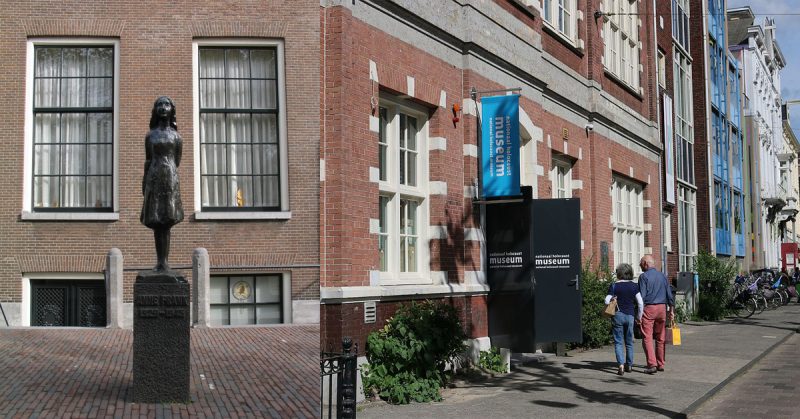The diary of Anne Frank has been the main focus for people considering the Netherlands’ role in World War II. Her story of hiding from the Nazis in Amsterdam is an inspiration which the Dutch have proudly held up before the world.
The larger story of how the Holocaust affected the Netherlands has been left untold. Many survivors and others are concerned that it will be lost forever.
After ten years of debate, the city council of Amsterdam approved a spot for a memorial wall. It will be dedicated to the memory of 102,000 Dutch Jews who fell victim to the Nazis. The decision came at the same time as the opening of the National Holocaust Museum. The museum is a separate endeavor from the memorial and will house exhibitions about the Holocaust and genocide.
These efforts reflect a desire for the generations that have come after the war to develop a fuller understanding of the five-year period of Nazi occupation. “When I talk to younger people, I tell them I’m the same as Anne Frank,” said Jacques Grishaver, 74. “That’s always where I start, because I want to tell them that it wasn’t only Anne Frank. There were more.”
Grishaver is the chair of the Auschwitz Committee, which pushed for the memorial wall. He lost as many as fifty relatives to the Nazis.
Between 75 and 80 percent of the Jews in the Netherlands were killed during World War II. This is the highest rate in Western Europe.
Daniel Libeskind, a Polish-American architect who designed the Ground Zero Master Plan in New York and the Jewish Museum in Berlin, was on board from the start. While visiting Amsterdam in 2011, he learned of the plans to build a memorial and signed on before a budget had even been set.
“All the major cities of Europe have Holocaust memorials, and Amsterdam is really one of the last,” he said. “I think it’s one of the most important projects because so much happened there.”
The memorial will cost about 5 million euros, or $5.5 million. It should be done at the end of 2017 or early in 2018. The museum will cost 22 million euros or $24 million at the end of its four-year plan. Both the museum and memorial will be set in the Jodenbuurt Jewish district in the eastern section of the old city center.
This was the neighborhood where the Nazis gathered Jews before sending them to concentration camps. Starting in 1943, around 34,000 Jews were sent to the Sobibor death camp in Poland. Only 18 survived, according to Maarten Eddes, the chair of the Sobibor Foundation in the Netherlands. This little-known camp was responsible for the deaths of a third of the Dutch Jews in the Holocaust. Auschwitz was responsible for most of the rest.
“The generation of survivors is dying on us, and we no longer have them to tell the story. We have to keep telling the story for them, lest we forget,” said Emile Schrijver, the general director of the Jewish Historical Museum and the Jewish Cultural Quarter in Amsterdam
The National Holocaust Museum will not just focus on the war but also examine how, for the Jews and for the Dutch, the deaths had consequences that will continue for generations. “The war didn’t stop in 1945,” he said. “It basically influenced who we are and how we think, and our whole perspective on society depends upon it.”
